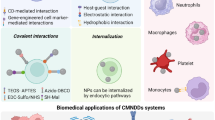Abstract
Presently, there are no effective treatments for several diseases involving the central nervous system (CNS). While several novel molecular approaches are being developed, many of them require delivery of macromolecular or supramolecular agents to the CNS tissues protected by the blood–brain and blood–arachnoid barriers. A variety of approaches that are being developed for overcoming or bypassing the barriers are based on complex transfer processes. The delivery of biopharmaceuticals and other macromolecules and particulates to the CNS, especially through the leptomeningeal (intrathecal) route, includes a variety of stages, such as leptomeningeal propagation, drainage to the systemic circulation, and penetration into the CNS. The investigation of complex pharmacokinetics that includes convective, as well as diffusional and active transfer processes, greatly benefit from real-time non-invasive in vivo monitoring of the drug transport. Pharmacological positron emission tomography (PET) imaging, which enables such monitoring, plays an increasingly significant role in drug delivery and biopharmacology. PET is a powerful tool for quantitative in vivo tracking of molecules labeled with positron-emitting radionuclides. The high sensitivity, format, and accuracy of the data (similar to those of conventional tissue sampling biodistribution studies) make PET a readily adoptable pharmacological technique. In contrast to the conventional studies, PET also allows for longitudinal nonterminal same-animal studies. The latter may not only improve the data statistics, but also enable preclinical studies (especially in large and/or rare animals) not feasible under the conventional approach. This paper is intended to demonstrate the character of data that can be obtained by PET and to demonstrate how the main patterns of the leptomeningeal route pharmacokinetics can be investigated using this method. Examples of data processing are taken from our recent studies of five model proteins in rats and nonhuman primates.







Similar content being viewed by others
References
RennelsML GregoryTF, Blaumanis OR, Fujimuto K, Grady PA. Evidence for a paravascular fluid circulation in the mammalian central nervous system, provided by rapid distribution of tracer protein throughout the brain from the subarachnoid spaces. Brain Res. 1985;326:47–63.
Yaksh T, editor. Spinal drug delivery. Amsterdam: Elsevier; 1999.
Sweet WH, Brownell GL. Localization of brain tumors with positron emitters. Nucleonics. 1953;11:40–5.
Friedman JE, Watson Jr JA, Lam DW-H, Rokita SE. Iodotyrosine deiodinase is the first mammalian member of the NADH oxidase/flavin reductase superfamily. J Biol Chem. 2006;281:2812–9.
Ullberg S, Ewaldsson B. Distribution of radio-iodine studied by whole-body autoradiography. Acta Radiol Ther Phys Biol. 1964;2:24–32.
Hays MT, Solomon DH. Influence of the gastrointestinal iodide cycle on the early distribution of radioactive iodide in man. J Clin Invest. 1965;44:117–27.
Belov VV, Bonab AA, Fischman AJ, Heartlein M, Calias P, Papisov MI. Iodine-124 as a label for pharmacological PET imaging. Mol Pharm. 2011;8(3):736–47.
Carney JPJ, Flynn JL, Cole KS, Fisher D, Schimel D, Via LE, Cordell M, Longford CPD, Nutt R, Landry C, Tybinkowski AP, Bailey EM, Frye LJ, Laymon CM, Lopresti BJ. Preclinical PET/CT system for imaging non-human primates. IEEE Medical Imaging Conference. 2009; abstract M06-67
Defrise M, Kinahan PE, Townsend DW, Michel C, Sibomana M, Newport DF. Exact and approximate rebinning algorithms for 3-D PET data. IEEE Trans Med Imag. 1997;16:145–58.
Farris, Griffith, editors. The rat in laboratory investigation. Philadelphia: Lippincott; 1949. p. 196–7.
Rieselbach RE, Di Chiro G, Freireich EJ, Rall DP. Subarachnoid distribution of drugs after lumbar injection. N Engl J Med. 1962;267:1273–8.
Calias P, Papisov M, Pan J, Savioli N, Belov V, et al. CNS penetration of intrathecal-lumbar idursulfase in the monkey, dog and mouse: implications for neurological outcomes of lysosomal storage disorder. PLoS One. 2012;7(1):e30341. doi:10.1371/journal.pone.0030341.
Chiro GD, Hammock MK, Bleyer WA. Spinal descent of cerebrospinal fluid in man. Neurology. 1976;26:1–8.
Segal MB. Fluid compartments of the central nervous system. In: Zheng W, Chodobski A, editors. The blood–cerebrospinal fluid barrier. Boca Raton: CRC; 2005. p. 83–99.
Rennels M, Gregory TF, Blauymanis OR, Fujimoto K, Grady PA. Evidence for a paravascular fluid circulation in the mammalian central nervous system, provided by the rapid distribution of tracer protein throughout brain from the subarachnoid space. Brain Res. 1985;326:47–53.
Passini MA, Lee EB, Heuer GG, Wolfe JH. Distribution of a lysosomal enzyme in the adult brain by axonal transport and by cells of the rostral migratory stream. J Neurosci. 2002;22:6437–46.
Davison H, Segal MB, editors. Physiology of the CSF and the blood–brain barriers. Boca Raton: CRC; 1996. p. 201.
Acknowledgments
This work was supported by NIH grant R21 CA152384, DoD grant BC100684, and grants from Shire HGT. Shire HGT also provided model proteins and imaging equipment.
Author information
Authors and Affiliations
Corresponding author
Rights and permissions
About this article
Cite this article
Papisov, M.I., Belov, V., Fischman, A.J. et al. Delivery of proteins to CNS as seen and measured by positron emission tomography. Drug Deliv. and Transl. Res. 2, 201–209 (2012). https://doi.org/10.1007/s13346-012-0073-3
Published:
Issue Date:
DOI: https://doi.org/10.1007/s13346-012-0073-3




